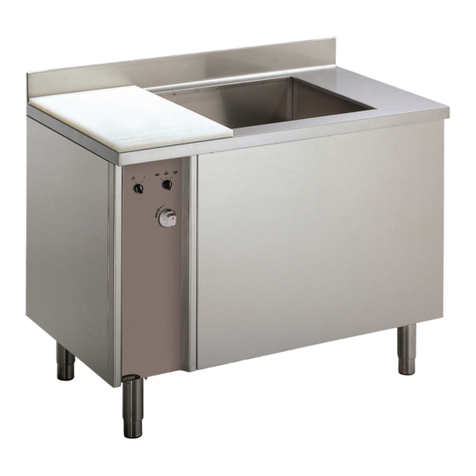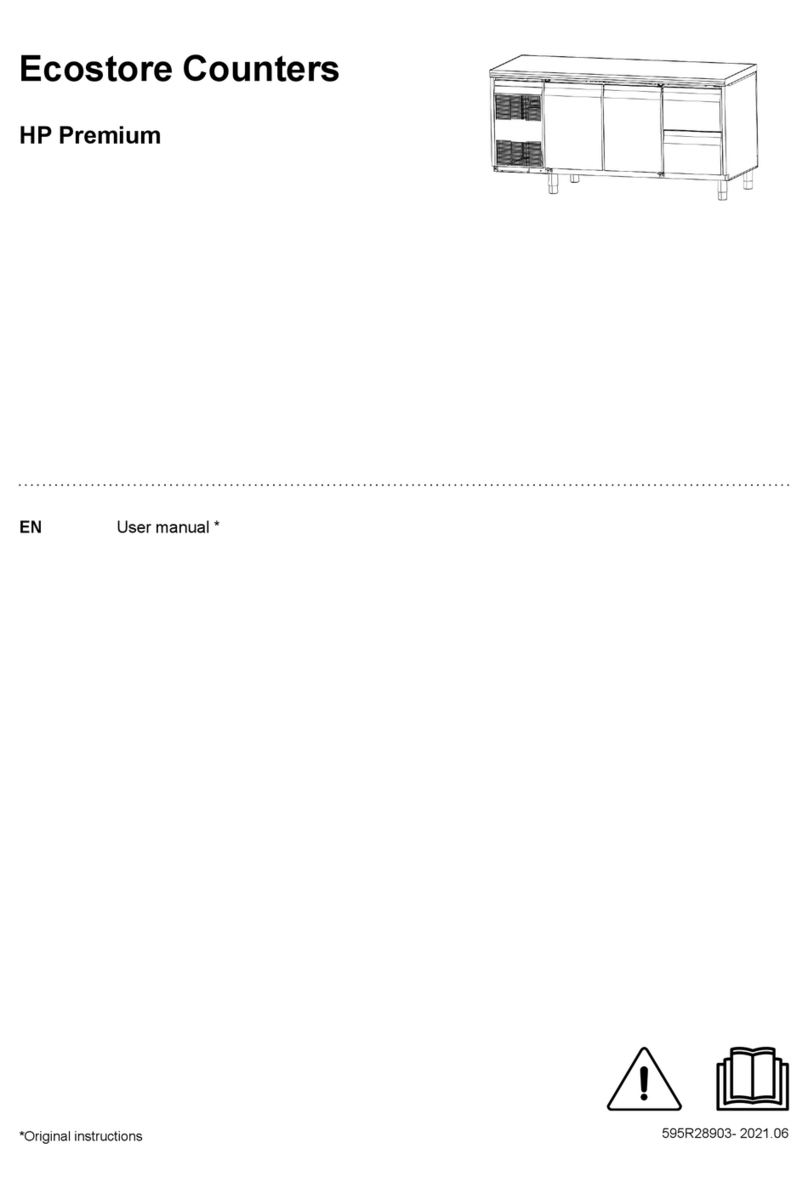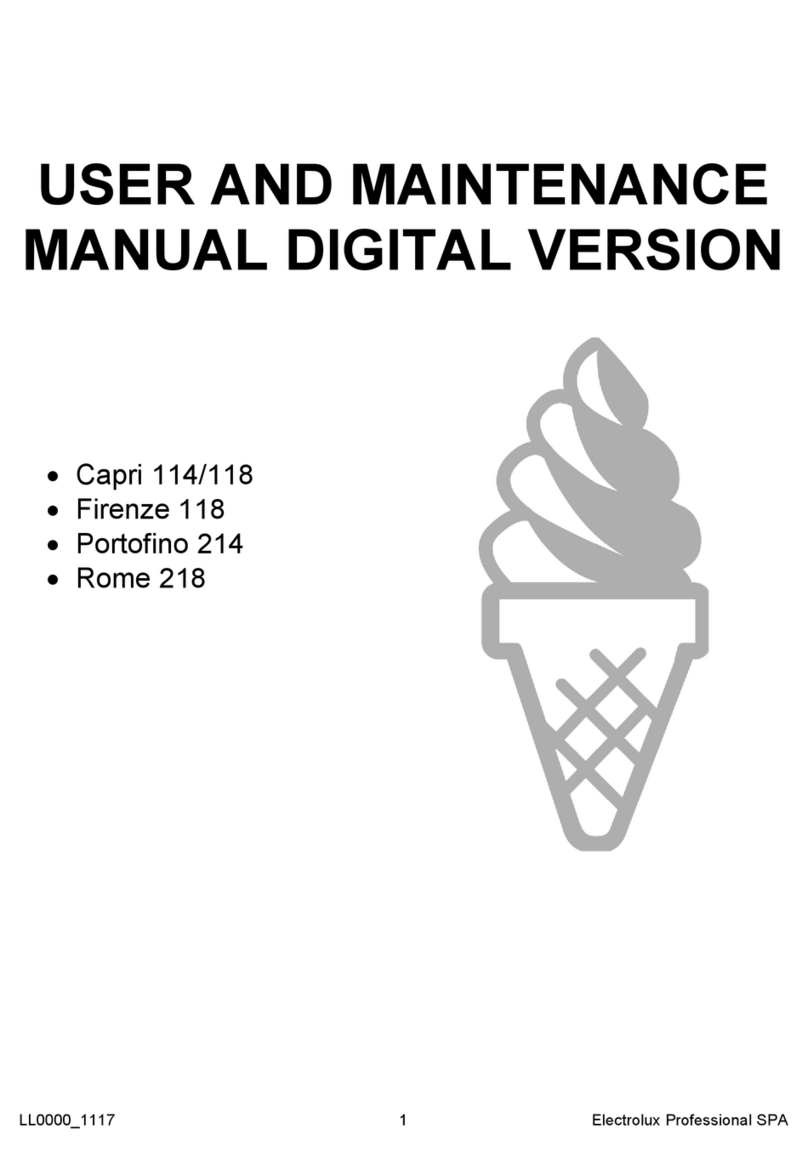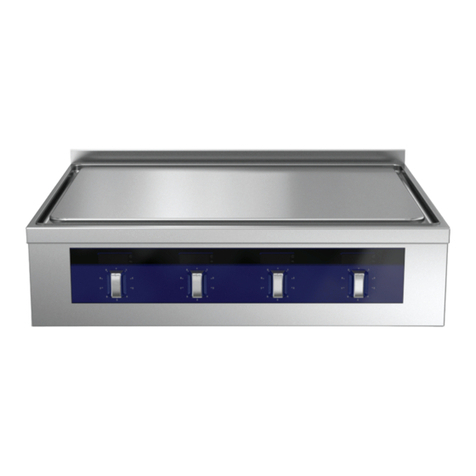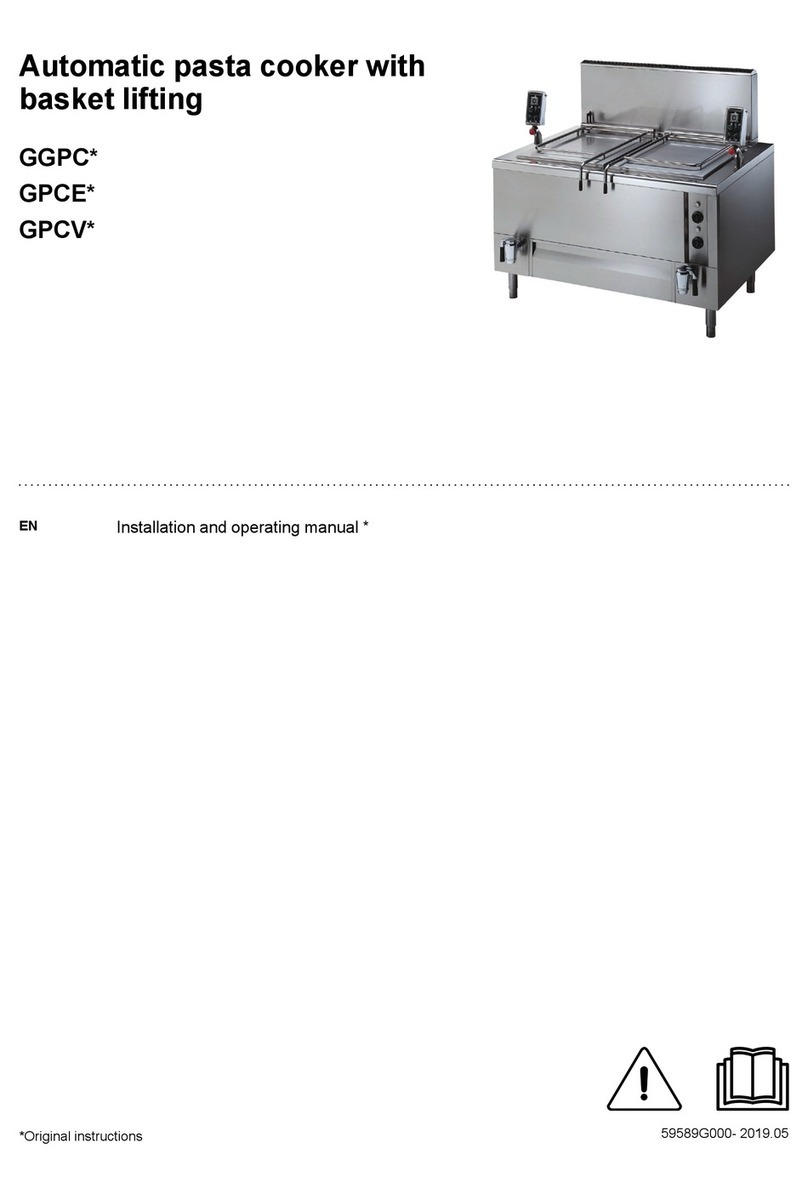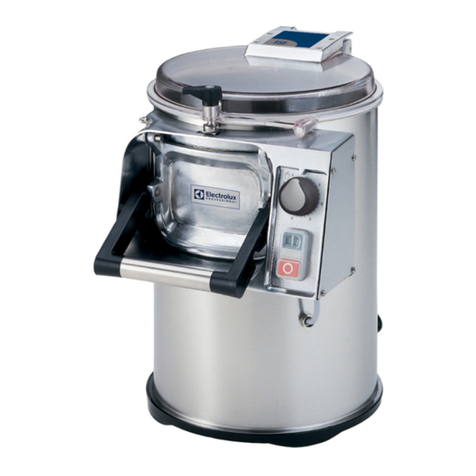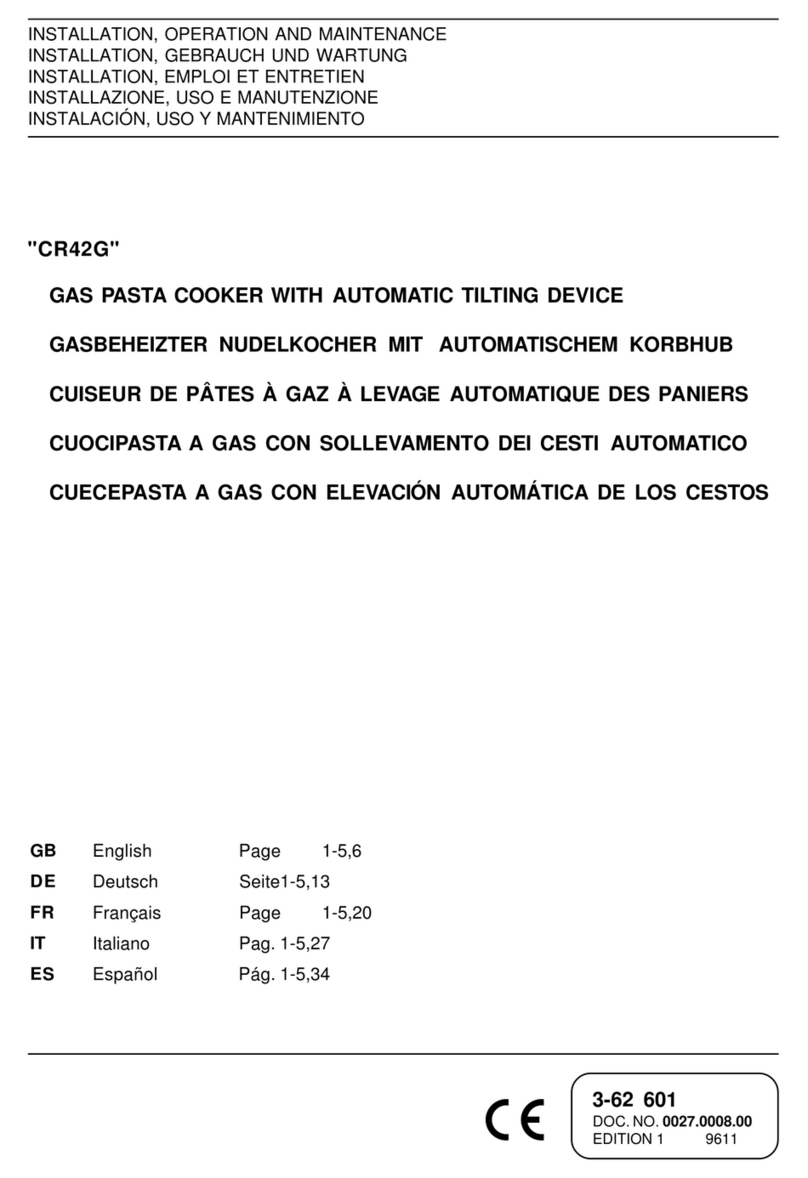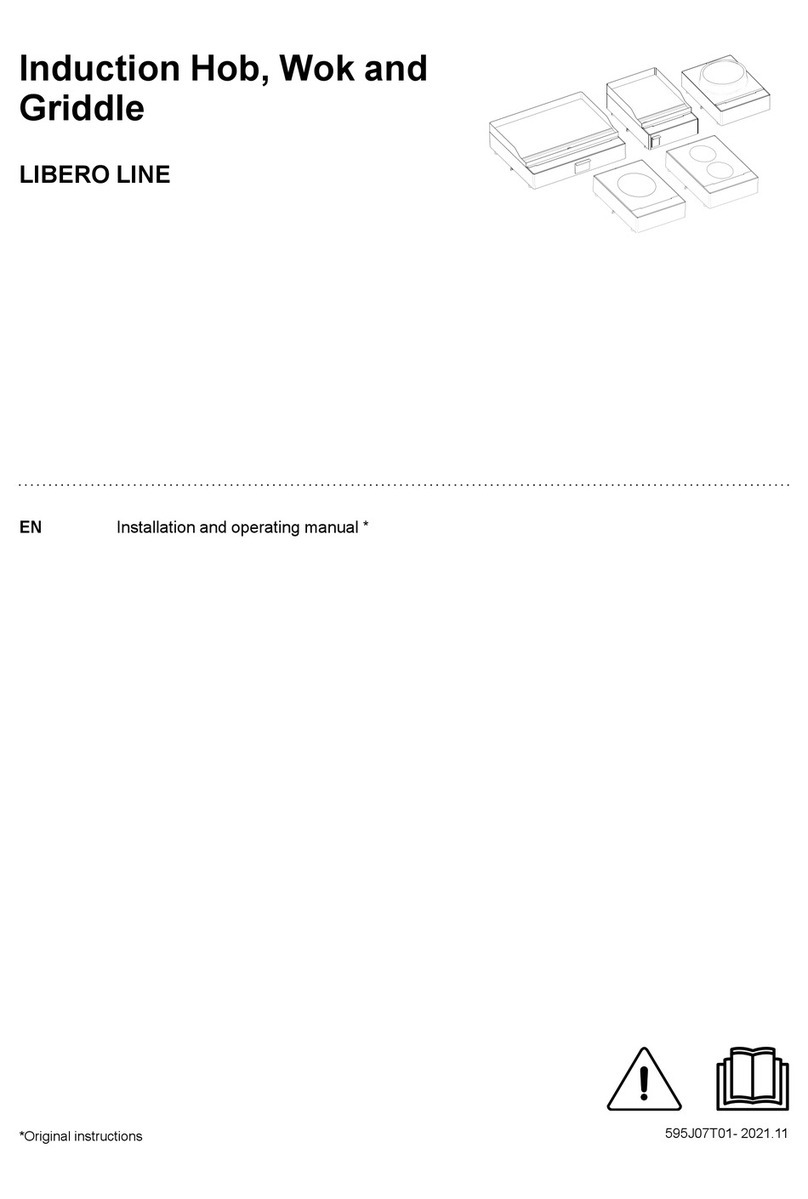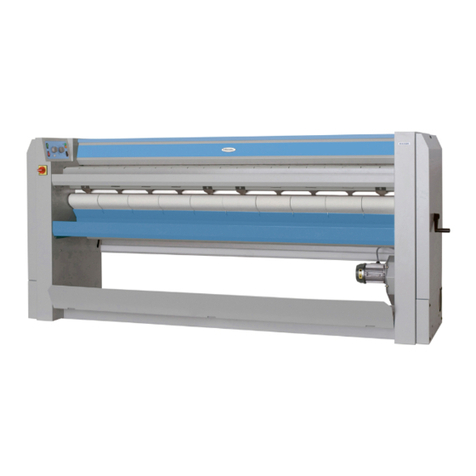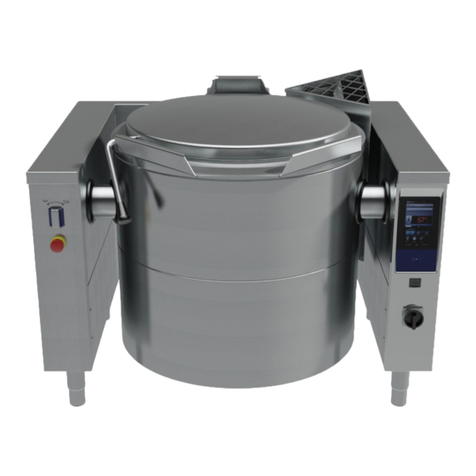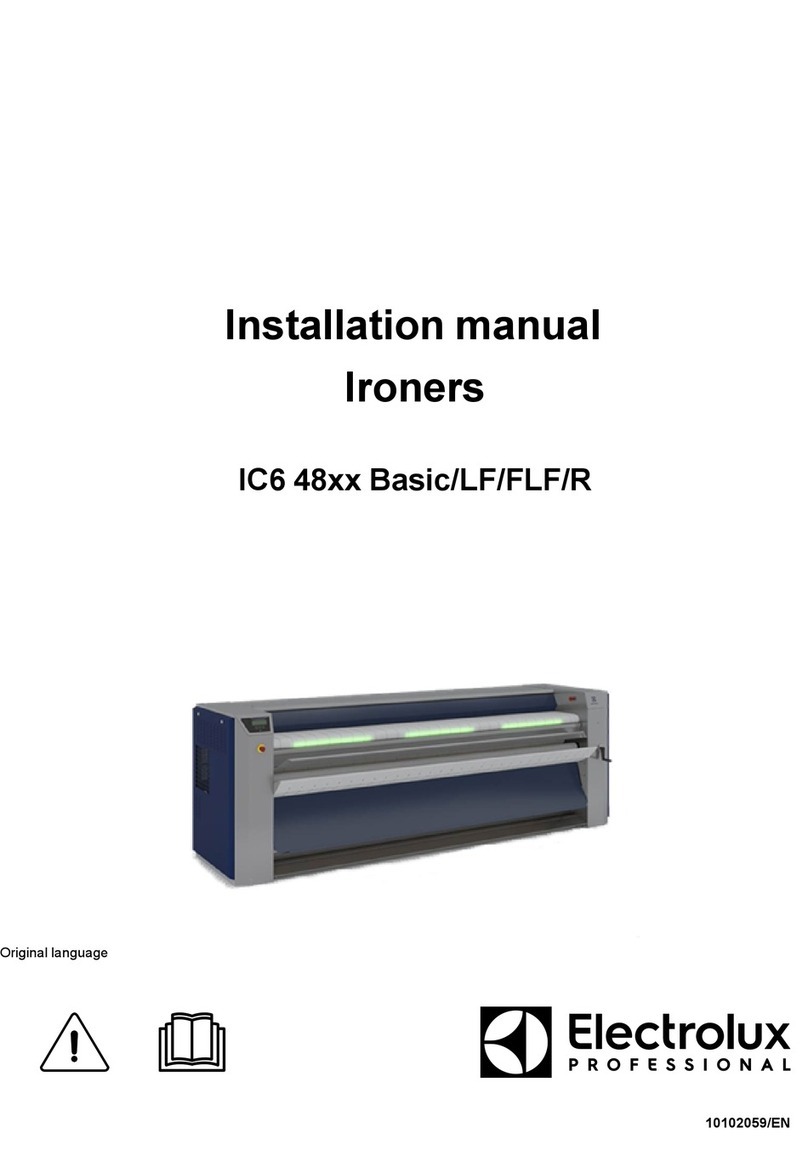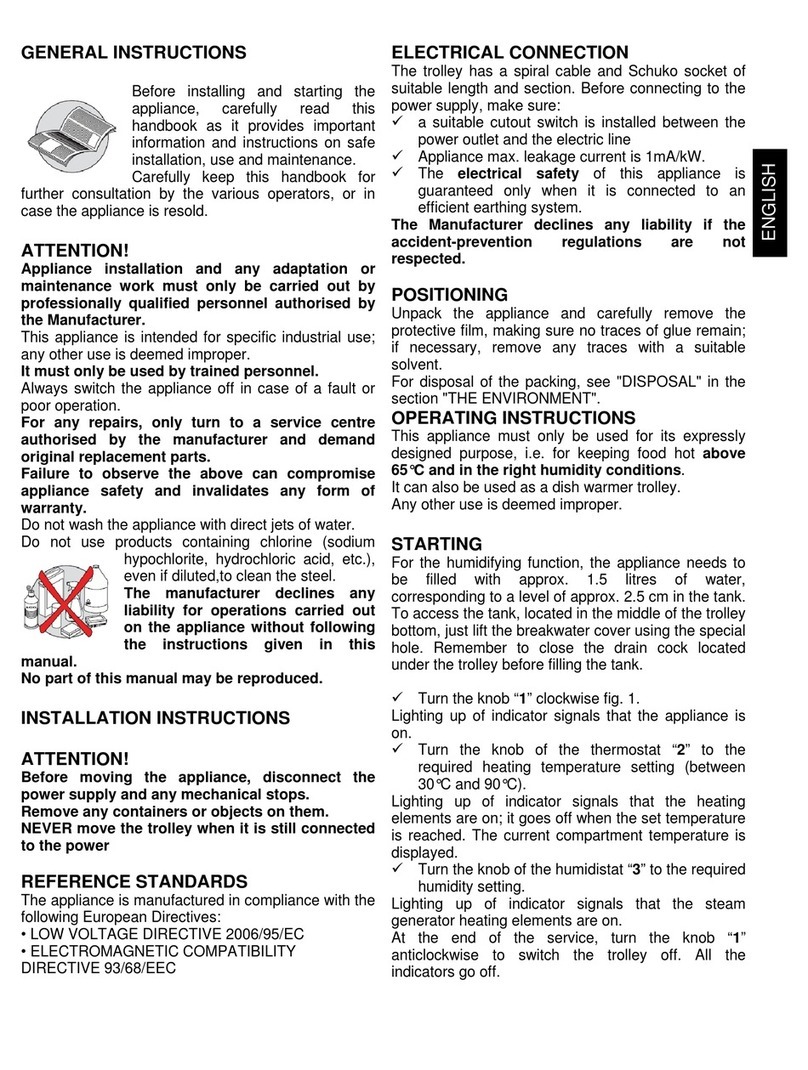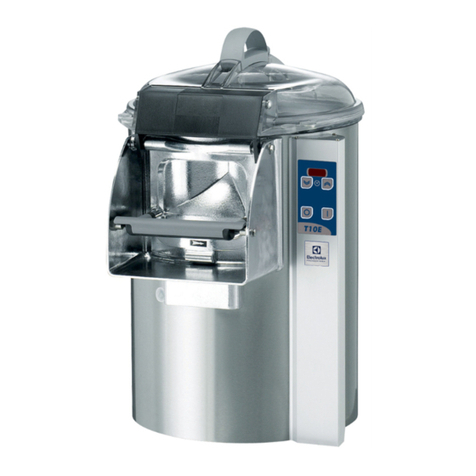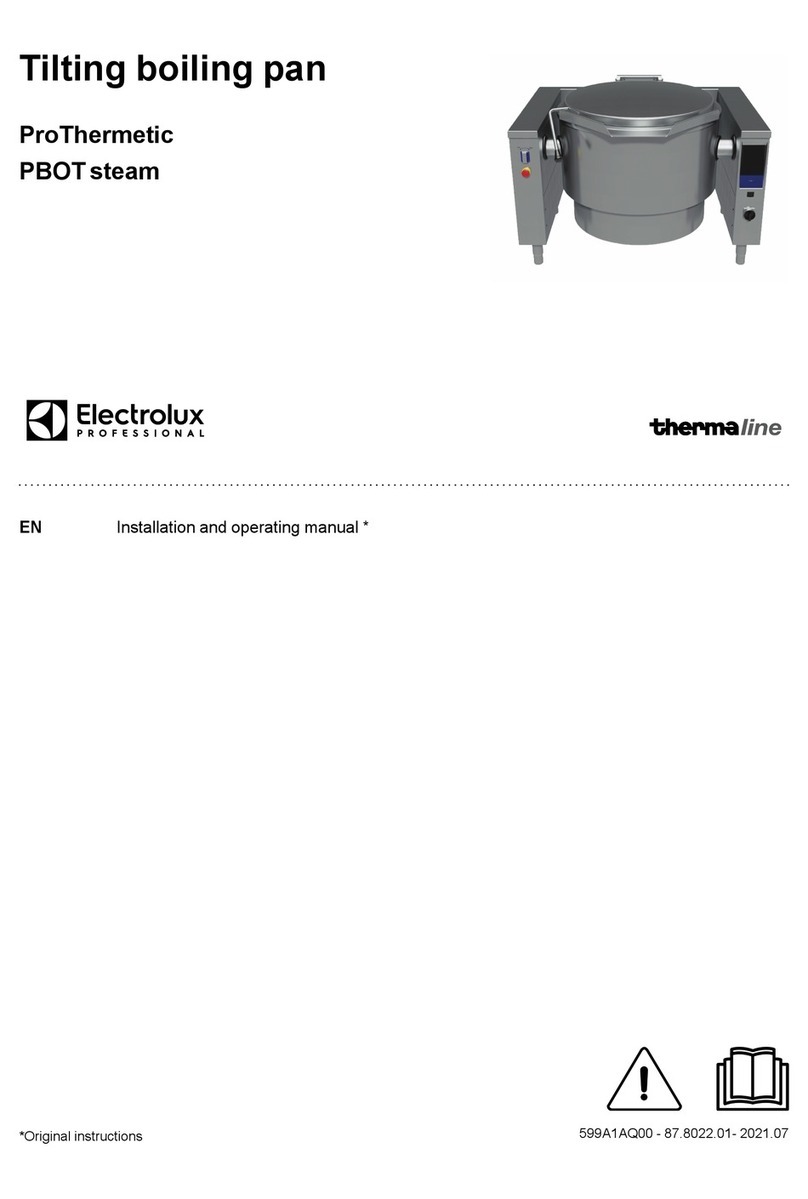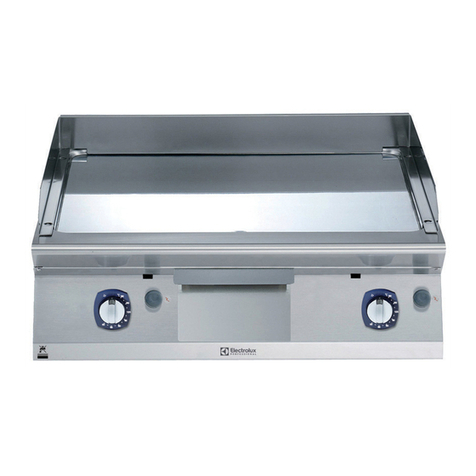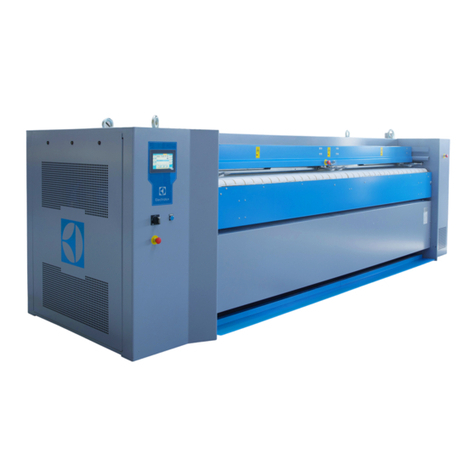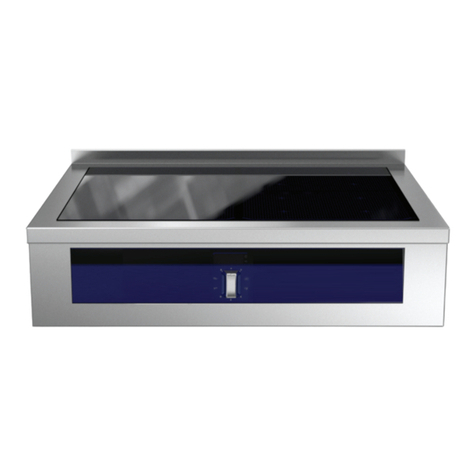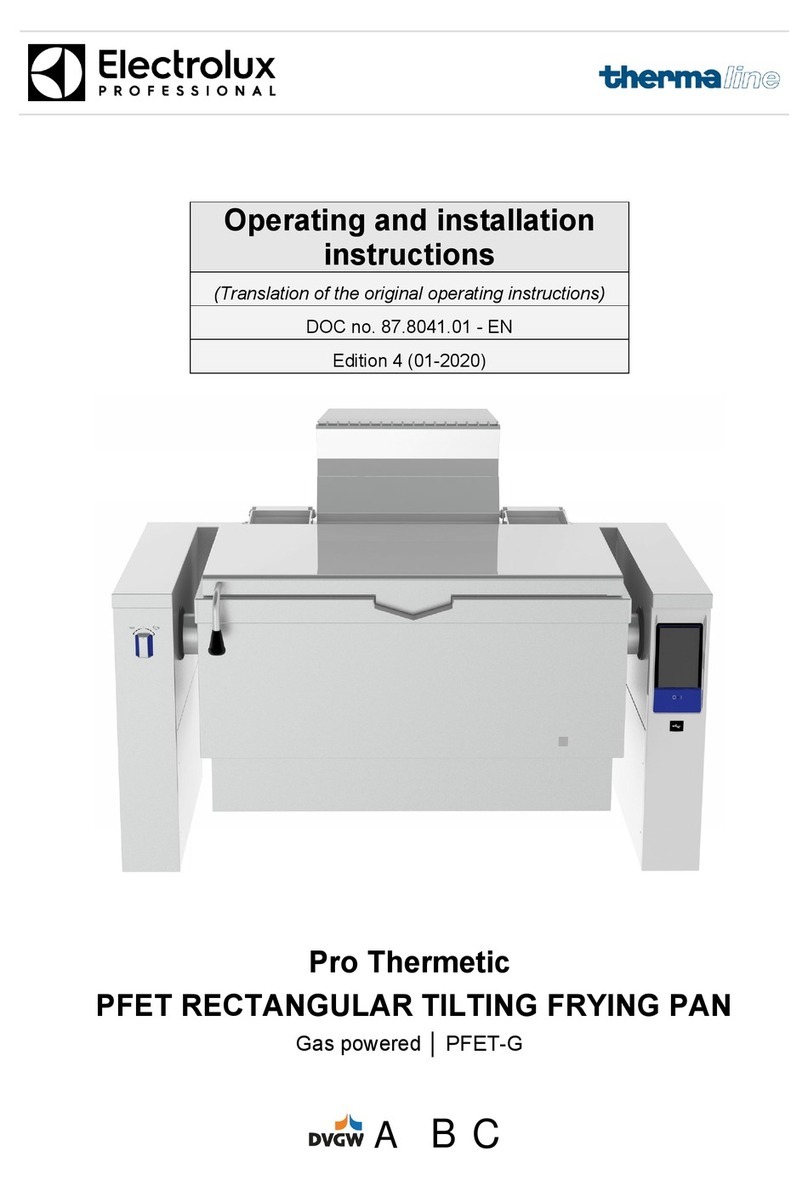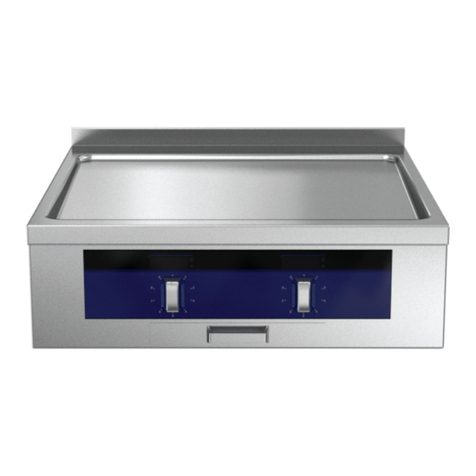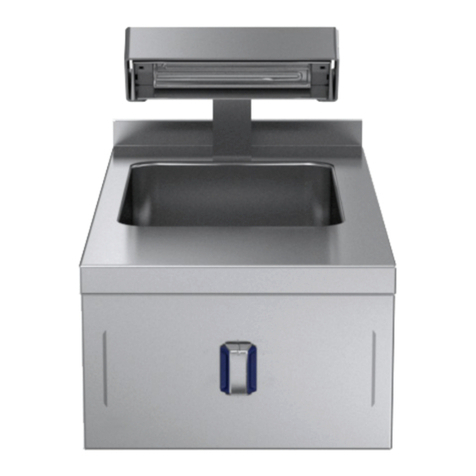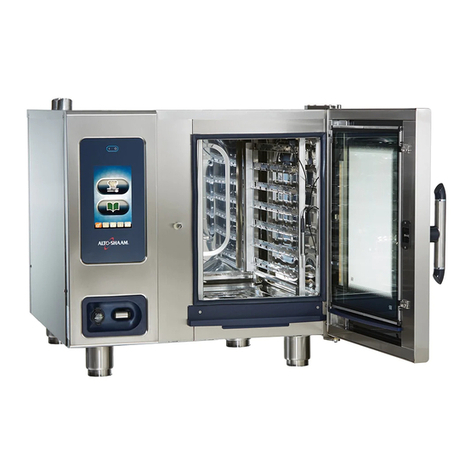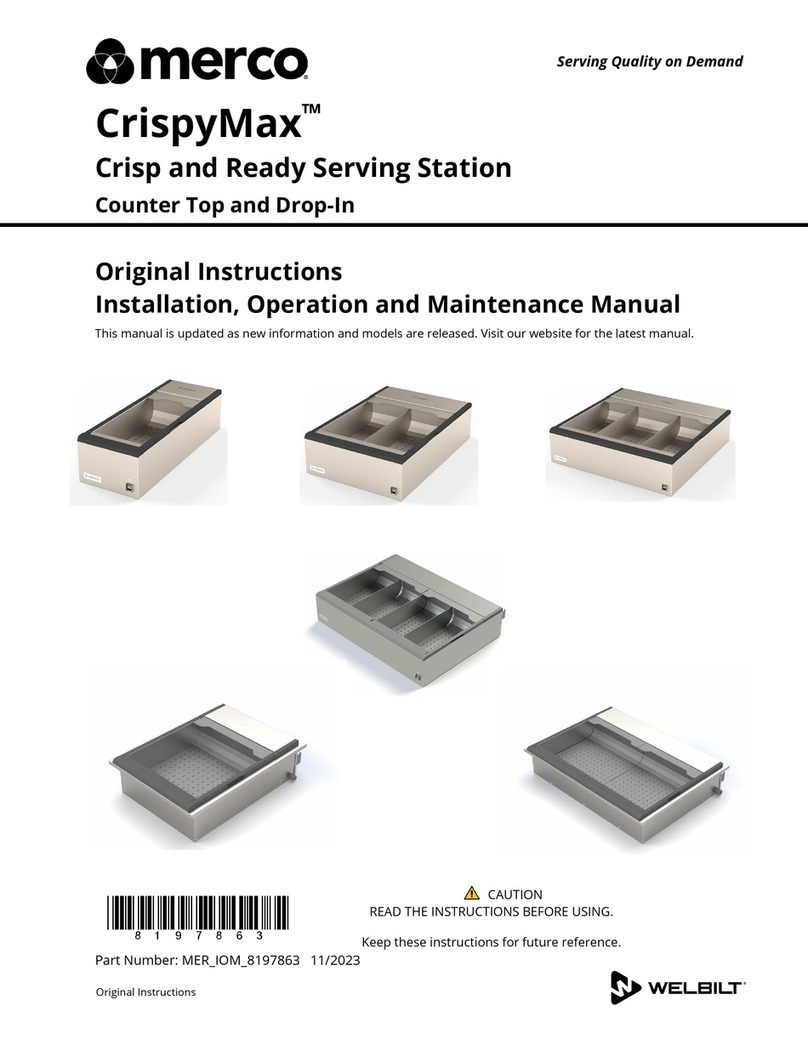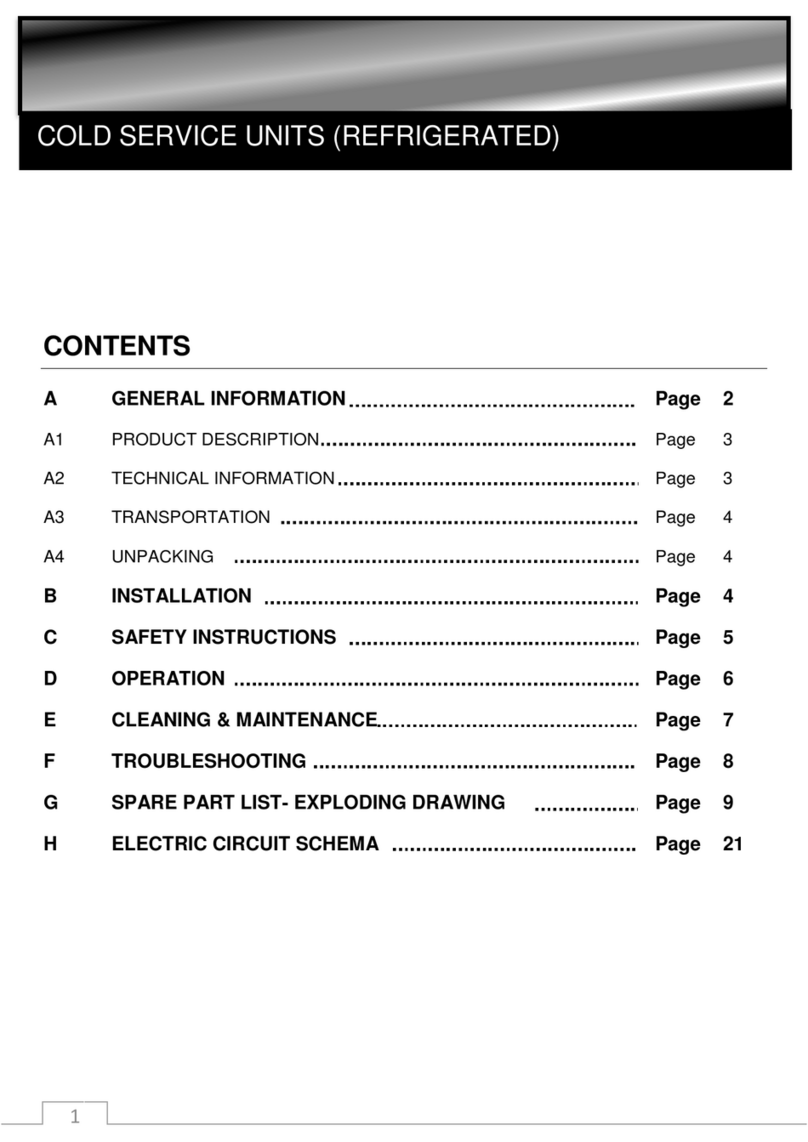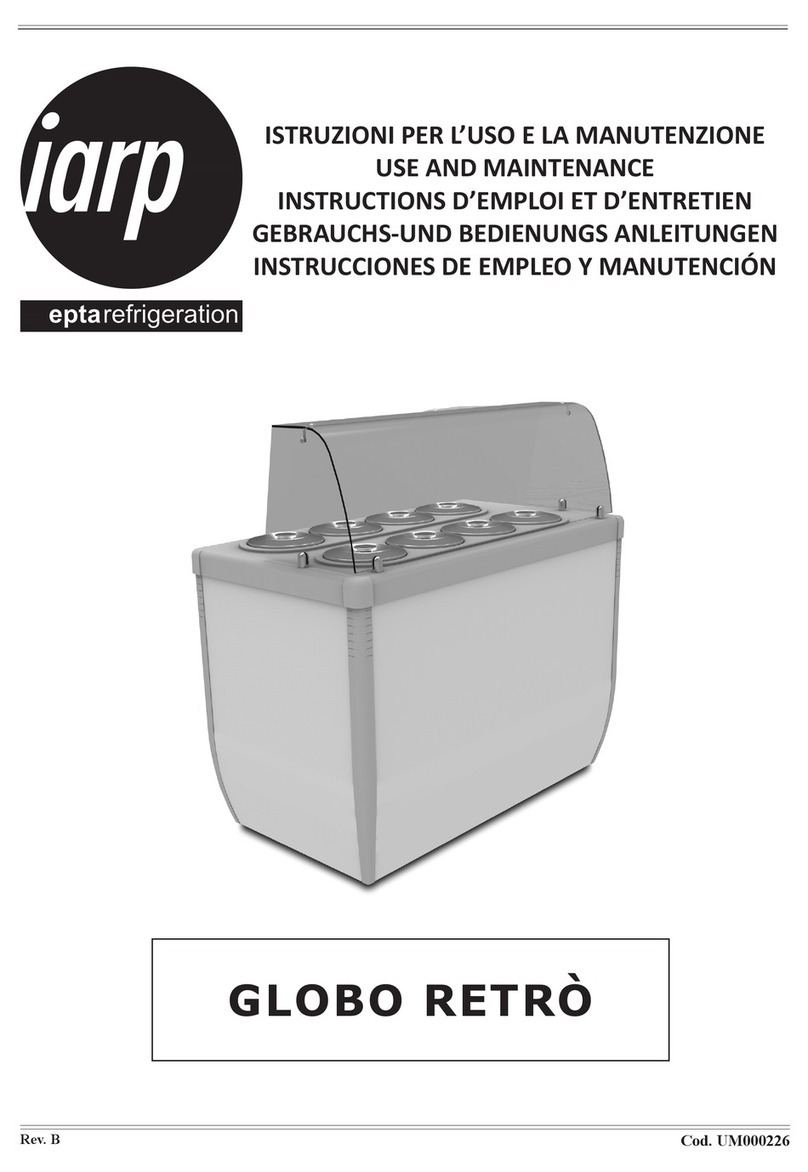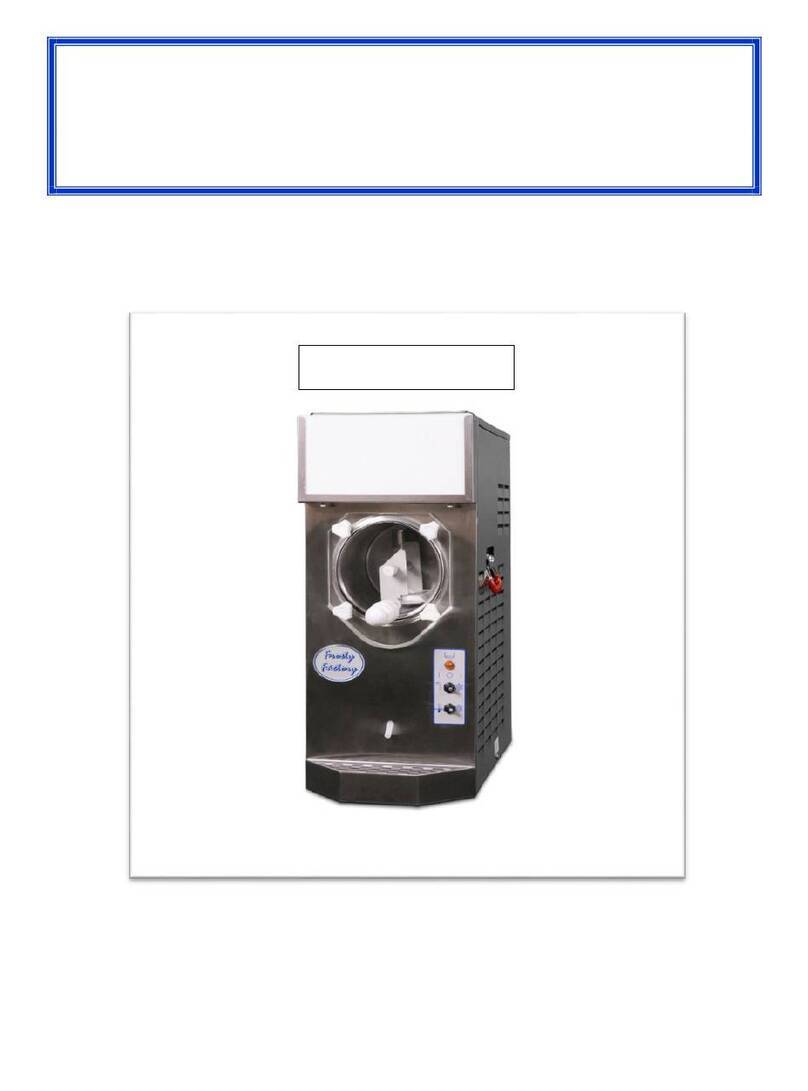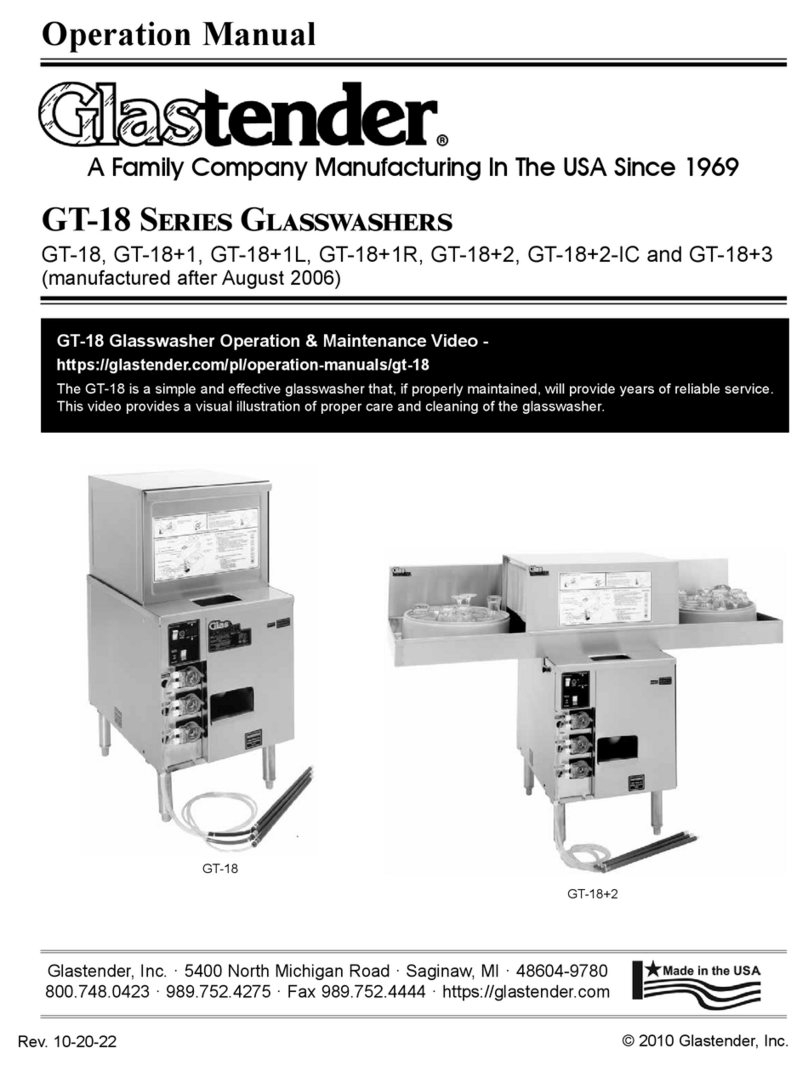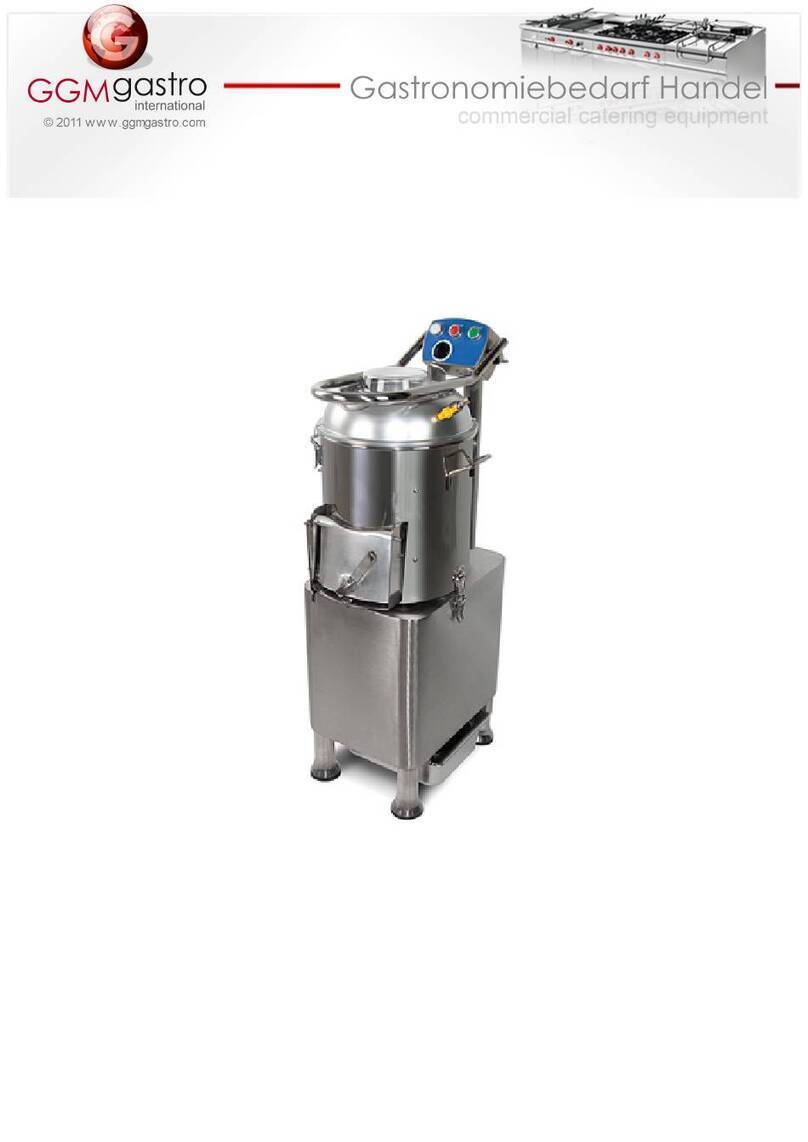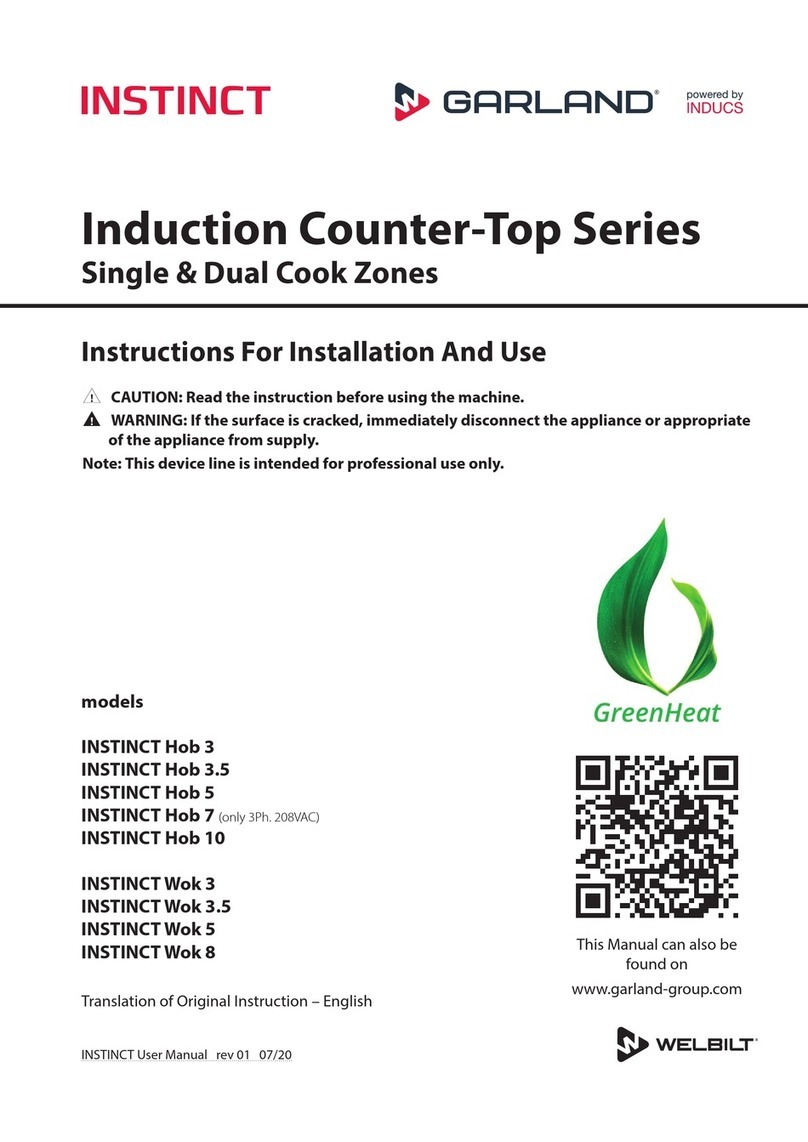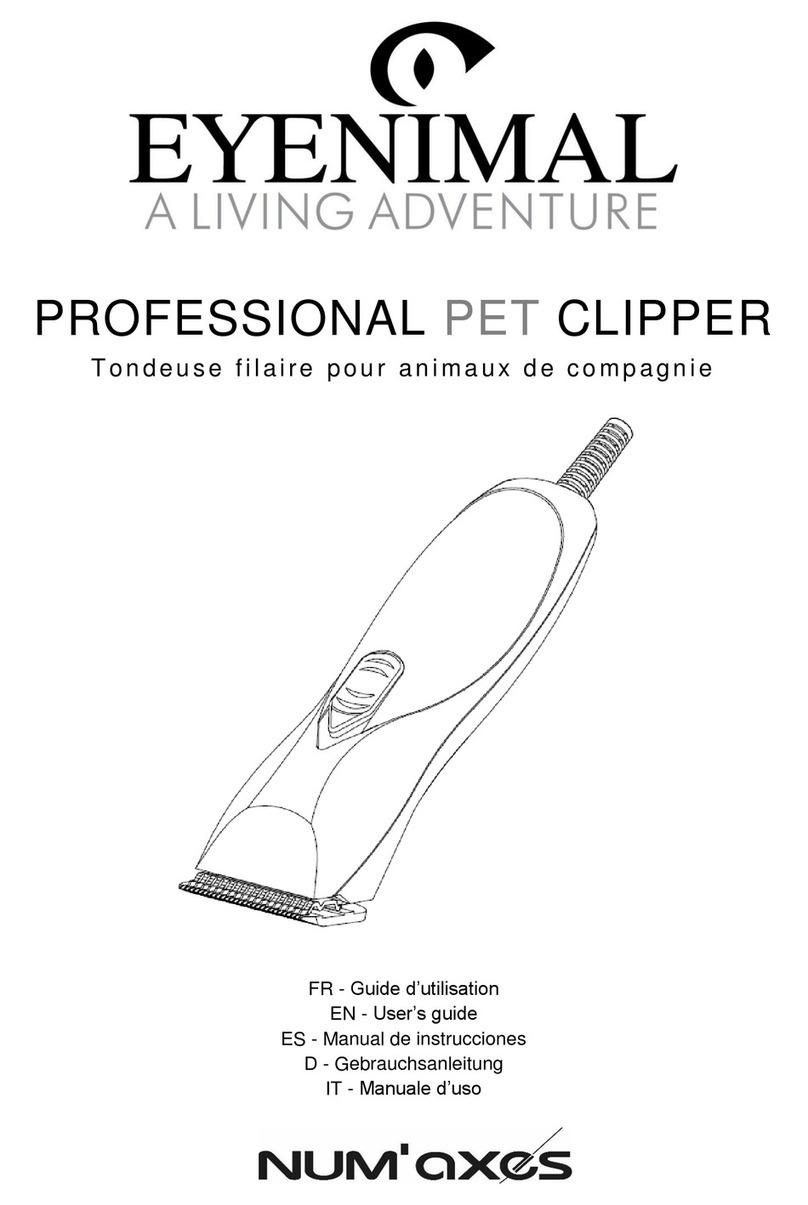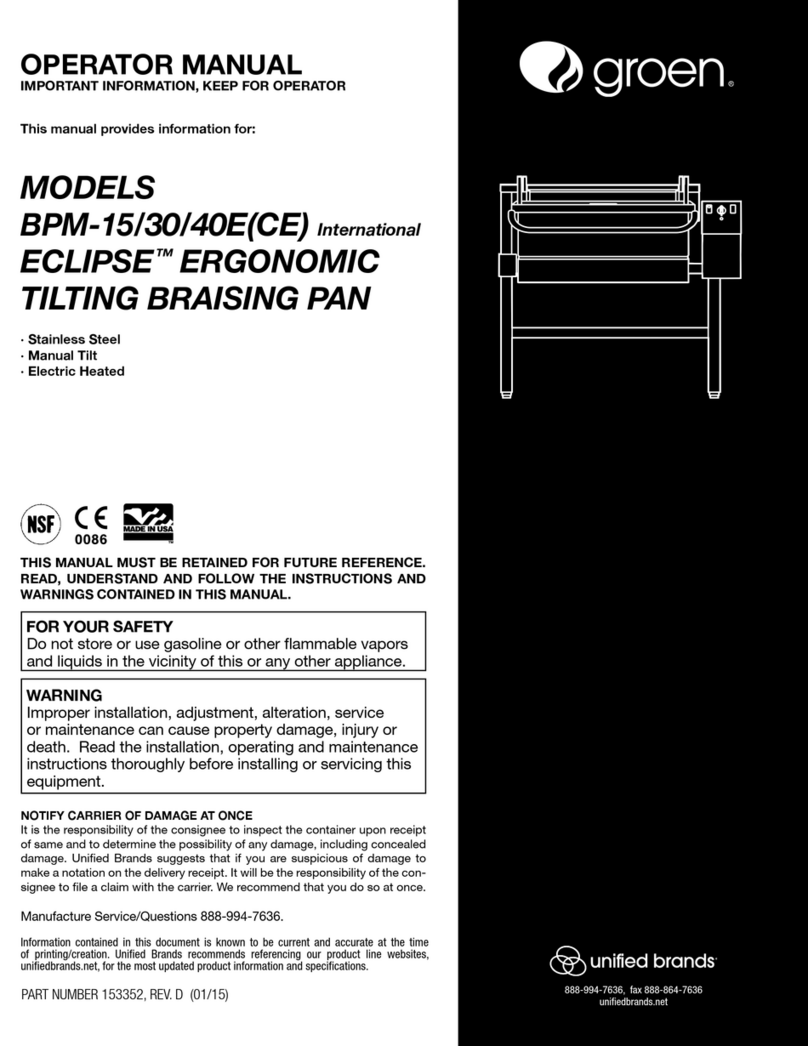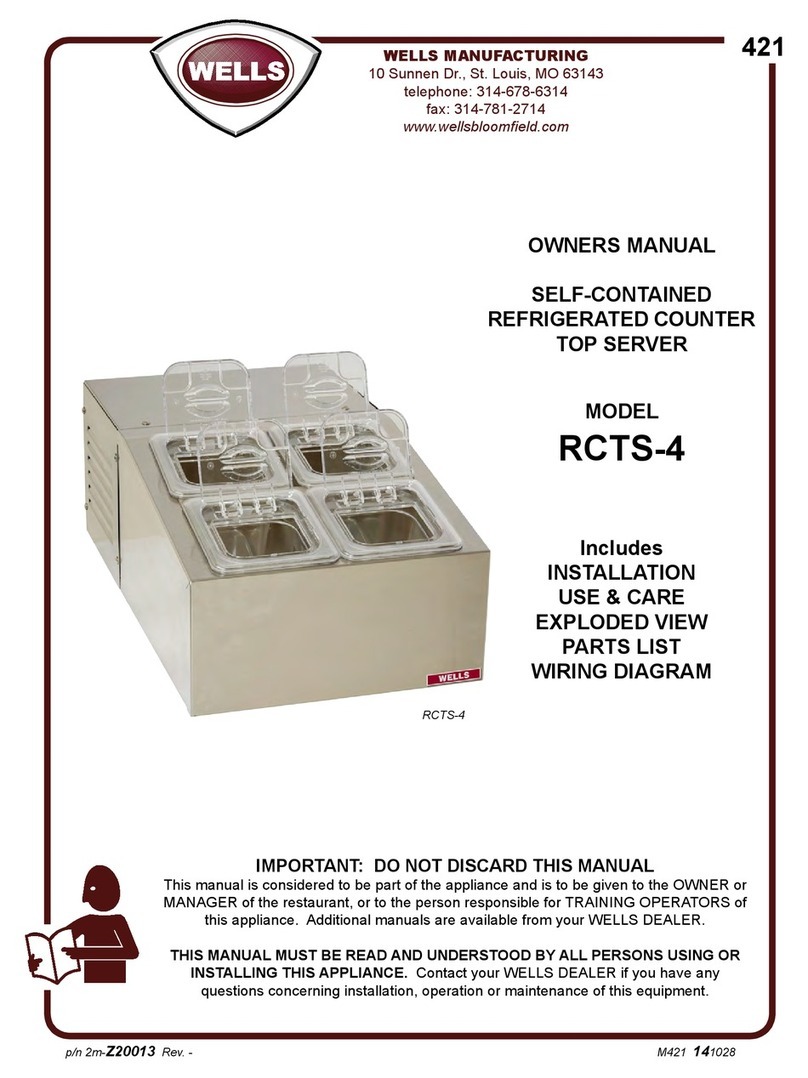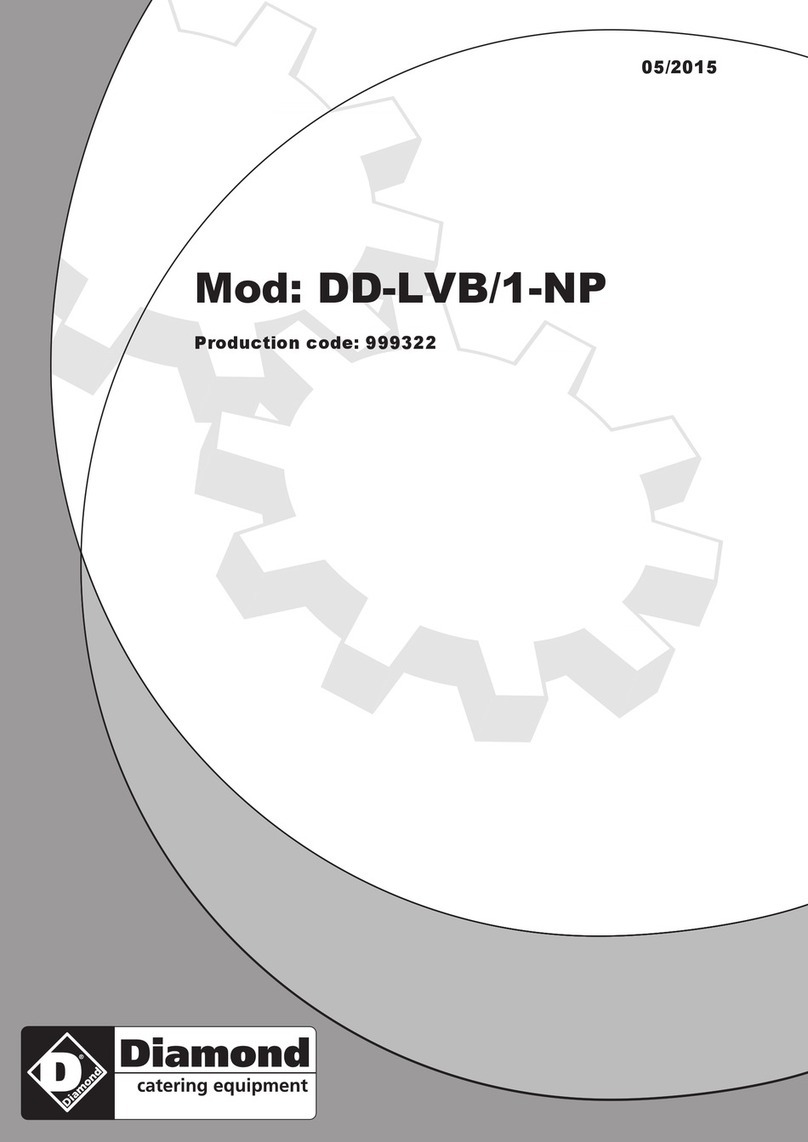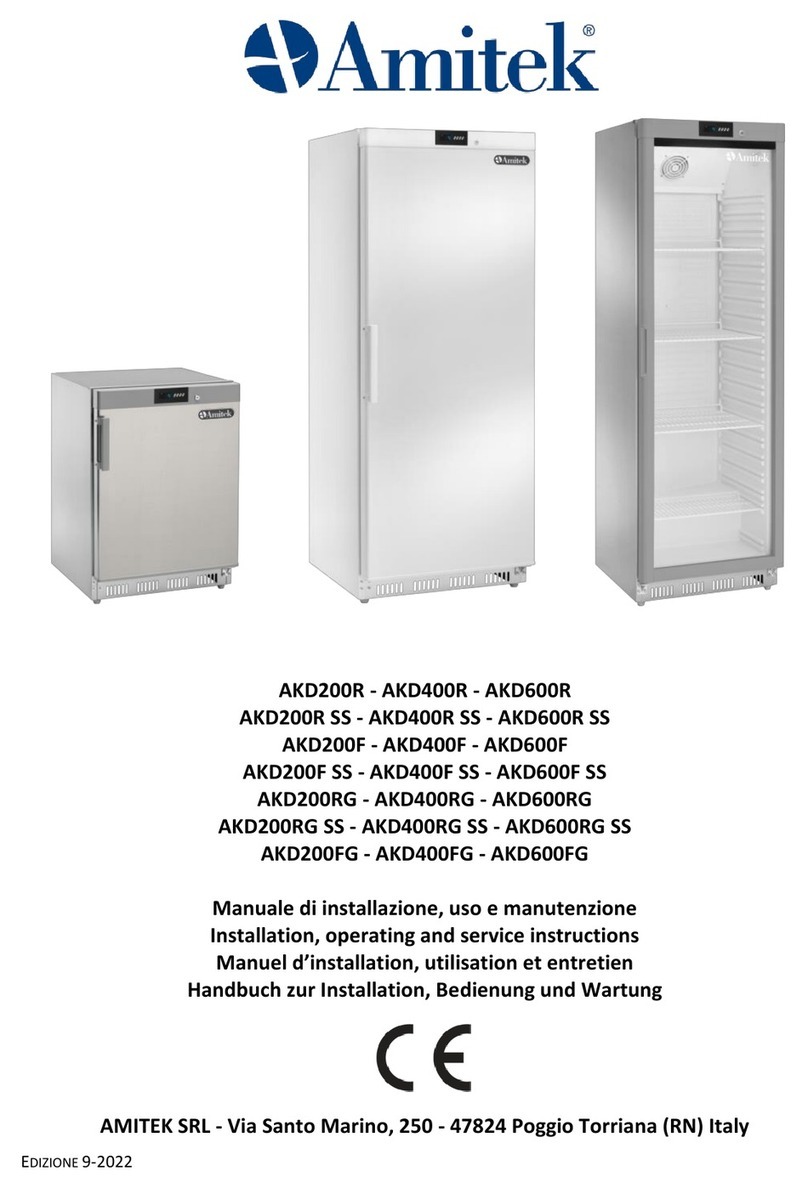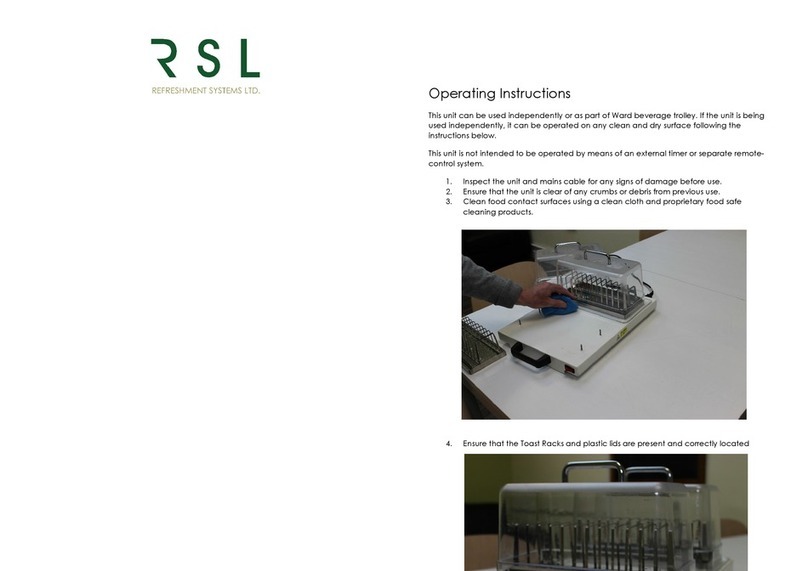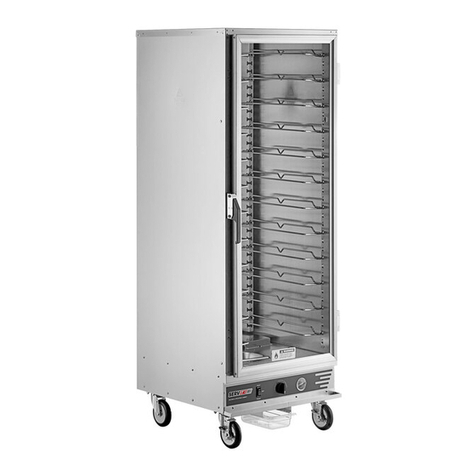
20
C.5 Materials and fluids used
The areas in contact with the food product are in steel; there
are stainless steel supports and screws inside the above-
mentioned areas.
The fluorinated gases are contained in a hermetically sealed
device.
An HFC (R452a (GWP:2141)) or HC refrigerant fluid for
models with refrigerant R290, complying with the current
regulations, is used in the refrigeration units. The type and
quantity of gas used are given on the dataplate.
The CO2 equivalent of the gas may be calculated multiplying
GWP value by quantity of gas.
D GENERAL INFORMATION
WARNING
Refer to “WARNING and Safety
Information“
D.1 Introduction
The drawings and diagrams given in the manual are not in
scale. They supplement the written information with an outline,
but are not intended to be a detailed representation of the
appliance supplied.
The numerical values given on the appliance installation
diagrams refer to measurements in millimeters and/or inches.
D.2 Intended use and restrictions
This appliance is designed for the refrigeration or preservation
of food. It is intended for industrial use. Any other use is to be
considered improper.
This appliance is manufactured in compliance with the
requirements of Directives:
• CEE 89/336 electromagnetic compatibility
• CEE 73/23 low voltage
• CEE 98/37 machines and relative reference standards.
The refrigerated base is designed to work in built-in
installations. The built-in installations foreseen are:
• Installation in-line and next to other cooking functions;
• undercounter installation;
• installation inside a specially obtained compartment.
The machine does not come complete with finishing in the
upper part. In the upper part of the machine there is an
accessory (perforated top) for installing and ensuring the
functionality of specific cooking equipment provided by the
manufacturer.
CAUTION
The machine is not suitable for installation
outdoors and/or in places exposed to
atmospheric agents (rain, direct sunlight,
etc.).
D.3 Testing and inspection
Our appliances have been designed and optimized, with
laboratory testing, in order to obtain high performance and
efficiency.
Passing of the tests (visual inspection - gas/electrical test -
functional test) is guaranteed and certified by the specific
enclosures.
D.4 Copyright
This manual is intended solely for consultation by the operator
and can only be given to third parties with the permission of
Electrolux Professional company.
D.5 Keeping the manual
The manual must be carefully kept for the entire life of the
appliance, until scrapping. The manual must stay with the
appliance in case of transfer, sale, hire, granting of use or
leasing.
D.6 Recipients of the manual
This manual is intended for:
• the carrier and handling personnel;
• installation and commissioning personnel;
• the employer of appliance users and the workplace
manager;
• operators for normal appliance use;
• specialised personnel - Customer Care service (see service
manual).
D.7 Definitions
Listed below are the definitions of the main terms used in the
manual. It is advisable to read them carefully before use.
Operator appliance installation, adjustment, use,
maintenance, cleaning, repair and trans-
port personnel.
Manufacturer Electrolux Professional SpA or any other
service centre authorised by Electrolux
Professional SpA.
Operator for
normal appli-
ance use
an operator who has been informed and
trained regarding the tasks and hazards
involved in normal appliance use.
Customer
Care service
or specialised
personnel
an operator instructed/trained by the
Manufacturer and who, based on his
professional and specific training, experi-
ence and knowledge of the accident-
prevention regulations, is able to appraise
the operations to be carried out on the
appliance and recognise and prevent any
risks. His professionalism covers the
mechanical, electrotechnical and elec-
tronics fields etc.
Danger source of possible injury or harm to health.
Hazardous
situation
any situation where an operator is
exposed to one or more hazards.
Risk a combination of probabilities and risks of
injury or harm to health in a hazardous
situation.
Protection
devices
safety measures consisting of the use of
specific technical means (guards and
safety devices) for protecting operators
against risks.
Guard an element of a appliance used in a
specific way to provide protection by
means of a physical barrier.
Safety device a device (other than a guard) that elimi-
nates or reduces the risk; it can be used
alone or in combination with a guard.
Customer the person who purchased the appliance
and/or who manages and uses it (e. g.
company, entrepreneur, firm).
Electrocution an accidental discharge of electric current
on a human body.
D.8 Responsibility
The Manufacturer declines any liability for damage and
malfunctioning caused by:
• non-compliance with the instructions contained in this
manual;
• repairs not carried out in a workmanlike fashion, and
replacements with parts different from those specified in




















